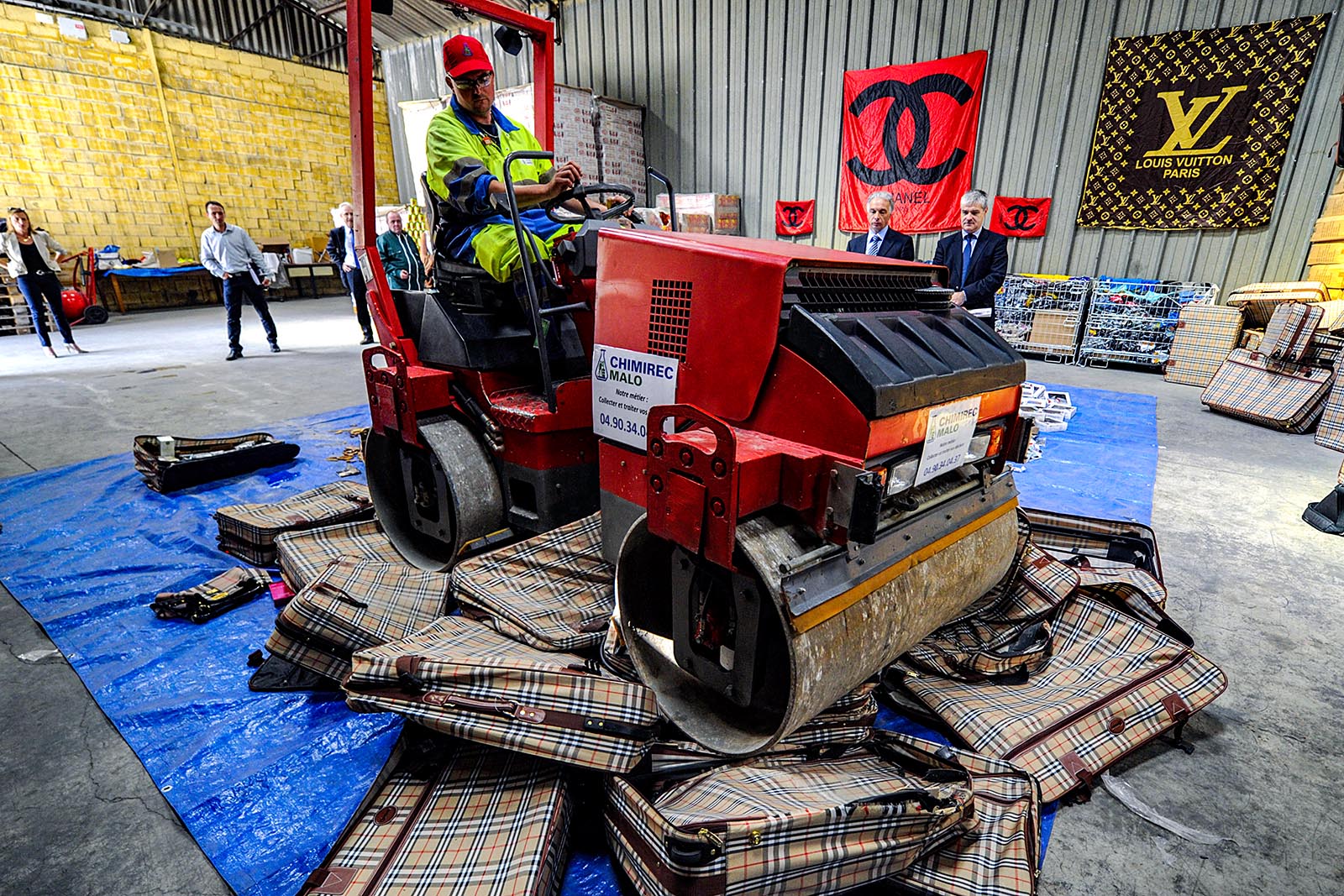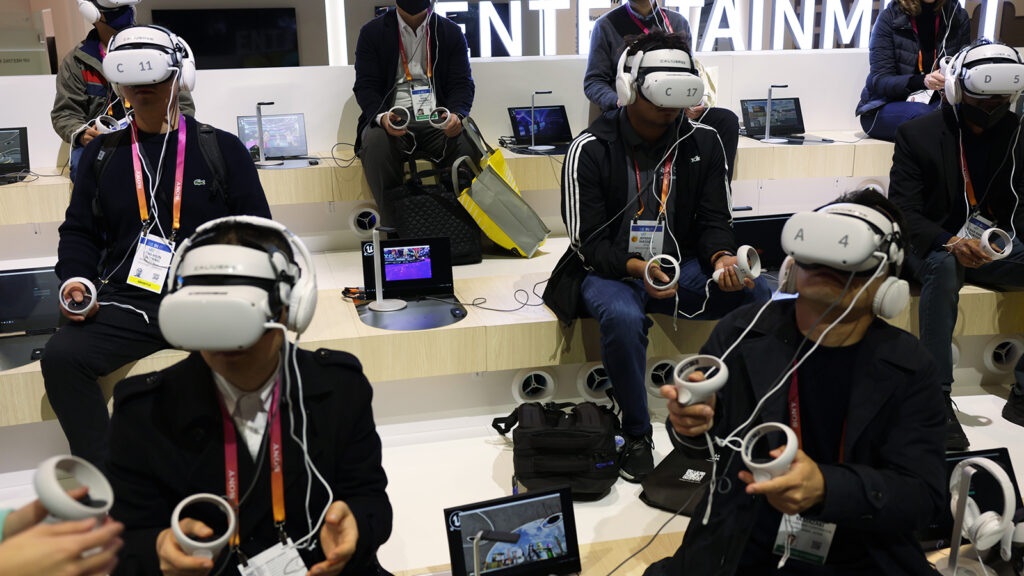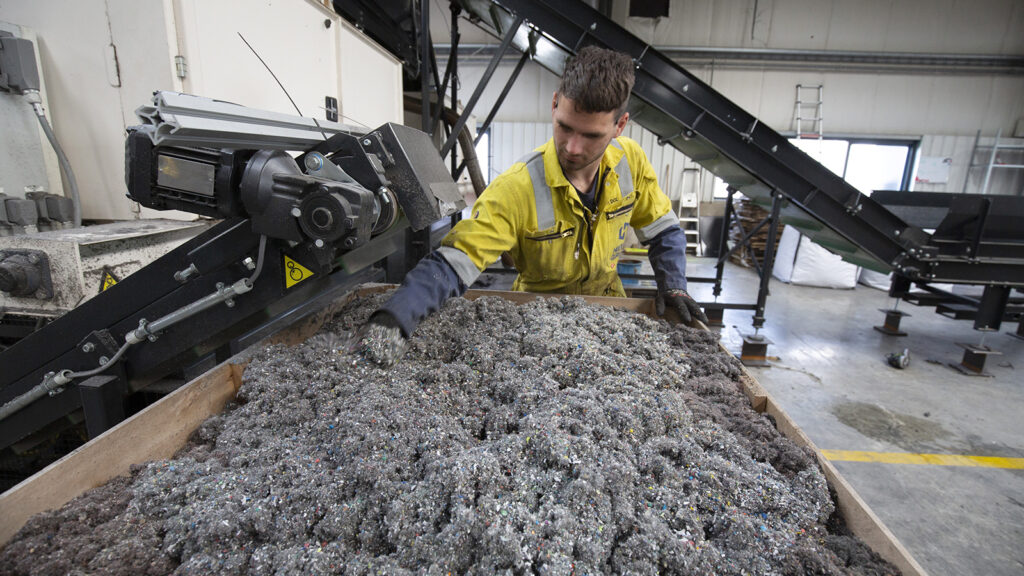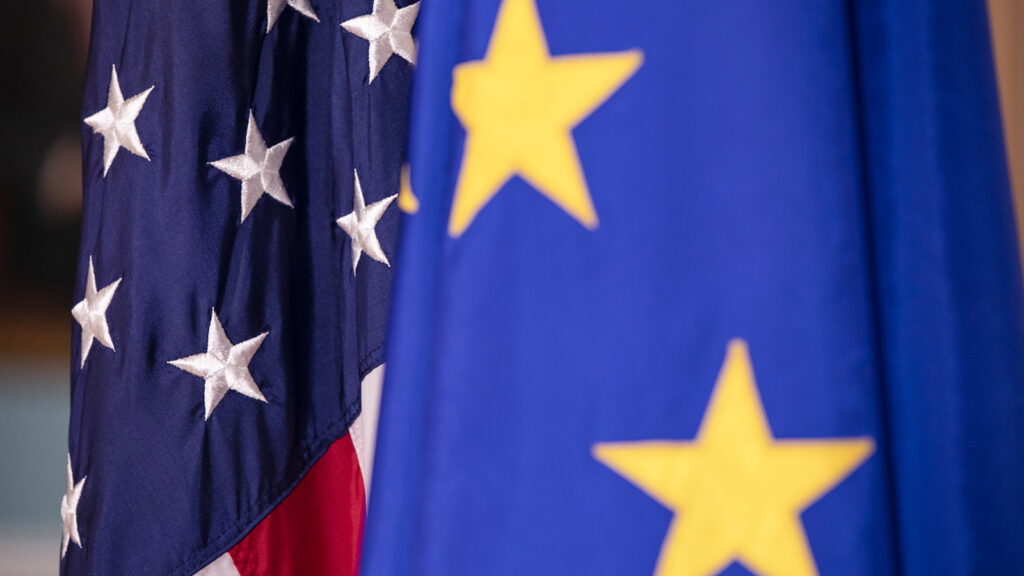Can Smart Dust End the Counterfeit Luxury Goods Trade?

French customs agents look on as counterfeit suitcases are destroyed. Technology such as smart dust and the blockchain can help curb counterfeiting.
Photo: Boris Horvat/AFP/Getty Images
Louis Vuitton bag for $50? MAC makeup for $10? If it sounds too good to be true, it probably is.
Counterfeiting plagues the luxury goods industry, costing brands up to $460 billion in lost sales each year. And while authorities are cracking down on fake goods and the factories creating them, many brands are turning to technology to better control the flow of their products.
Blockchain, with its immutable digital ledger, has been earmarked as a possible solution to better authenticate the originality of luxury items, document their supply-chain movement, and prove to customers that they are investing in genuine products. However, while there are many examples of blockchain being used in the luxury goods industry, the recurrent problem has been finding a tamper-proof manner to mark individual items. In short, we have the software to document the movement of goods, but we struggle with the hardware.
Luckily, an innovative mix of blockchain and another emerging technology, smart dust, could hold the key to saving the luxury goods industry by offering brands a means of marking their goods to outsmart even the smartest counterfeiter.
Saving the Luxury Goods Business
Traditionally, the two biggest unsolved problems in the luxury goods trade have been:
- Verifying product authenticity
- Monitoring product movement along the supply chain
The blockchain digital ledger has proven highly effective in both cases. Early on in blockchain’s evolution, companies used the technology to digitally validate the ownership of precious items, such as paintings and jewels. A number of companies tag and save individual product identification numbers on blockchain, focusing on anti-counterfeit measures in the diamond, pharmaceuticals, electronics and luxury industries. This allows manufacturers to verify product authenticity and follow individual products along the supply chain to detect suspicious movement, theft, or replacement with counterfeits.
Other companies use blockchain to offer product traceability to assure end buyers that their product is authentic, even offering the ability to record the identifying features of a diamond, including color and clarity, and register them to a blockchain.
Tracking the Supply Chain
Although these applications have proven useful for tracking products on the supply chain, one serious problem remains. As brands improve the way they monitor product flows, criminals also get better at counterfeiting them.
Trading counterfeit goods is a multibillion-dollar business. Criminal gangs posses the high-tech machinery needed to create passable counterfeit goods, and they can also replicate tags on products. While a mix of identification tags with information stored on blockchain may be enough to deter rookie counterfeiters, the technology itself is not watertight.
The Limits of the QR Code
To mark products with identification numbers stored on blockchain, brands have been using QR code labels, NFC tags or RFID labels. However, while NFC tags and RFID labels are a step in the right direction, hackers can still edit or replicate them. A quick online search reveals how to do so using easily downloadable software or simply an Android smartphone with the right app.
Blockchain has laid the groundwork for luxury brands to cut out counterfeits. Smart dust will likely be the technology to seal the cracks in the system.
A recent blogpost on NFCToday outlines the risks for brands placing an NFC tag on a luxury handbag, which, when scanned, will redirect a user to the brand’s website to authenticate the tag on its databases. The author argues that because the buyer does not know exactly what the webpage looks like and may never have visited it before, it would be possible for criminals to simply create their own NFC tags for counterfeit products with a link to a fake website.
From editing NFC tags to replicating the QR codes on real products, there are ways for savvy counterfeiters with access to the right technologies to get around roadblocks.
But not for long.
Is Smart Dust the Solution?
This year’s Gartner Hype Cycle for Emerging Technologies, a report that tracks the progress of various technologies from innovation to widespread adoption, featured an emerging technology called smart dust. Smart dust is a collection of tiny dust-sized sensors or Internet-of-Things devices that can be used to detect factors such as light or sound, but that could also be used to identify items via unique electromagnetic characteristics.
It will probably take 10 years for this product to enter the mainstream, but the technology powering smart dust offers a potential solution for luxury brands seeking to mark their products in a tamper-proof manner. Due to the miniscule size of the smart dust fragments, it would be virtually impossible for counterfeiters to realize the item had been marked or replicate smart dust’s electromagnetic qualities.
The Dust Fingerprint
Using a portable smart dust reader or smart device app, brands or end consumers would be able to verify a luxury item’s authenticity by matching its “dust fingerprint” with the record of the original item, stored on blockchain.
By storing dust fingerprints on blockchain and offering access to every stakeholder on the value chain, each manipulation of an item could be logged. When an end user buys a product, this ownership could also be logged on the blockchain, with information identifying the official owner—which could be consulted if the item were stolen or re-sold.
Ending the trade of counterfeit goods would have multiple positive outcomes. The International Chamber of Commerce forecasts that counterfeit products will drain $4.2 trillion from the global economy and put 5.4 million legitimate jobs at risk by 2022. By plugging the leaks and reducing the flow of fake goods, brands will be more profitable and won’t need to lay off manufacturers and employees. Profits will also reduce the flow of capital into the black market.
Secondary Markets Made Possible
Improved monitoring over a product’s life span would also allow brands to open official secondary market platforms and re-sell official authenticated goods, just like car manufacturers sell secondhand cars. Reducing the damage caused by fake goods would improve overall customer experience and confidence in buying luxury goods. It would also provide increased options for buying goods locally and reduce overall prices in the long term, once brands erase the effects of counterfeiting.
So while blockchain technology has laid the groundwork for luxury brands to cut out counterfeits and better track their products across the supply chain, smart dust will likely be the technology to seal the cracks in the system. If good things come in small packages, then smart dust must be pretty exceptional.








